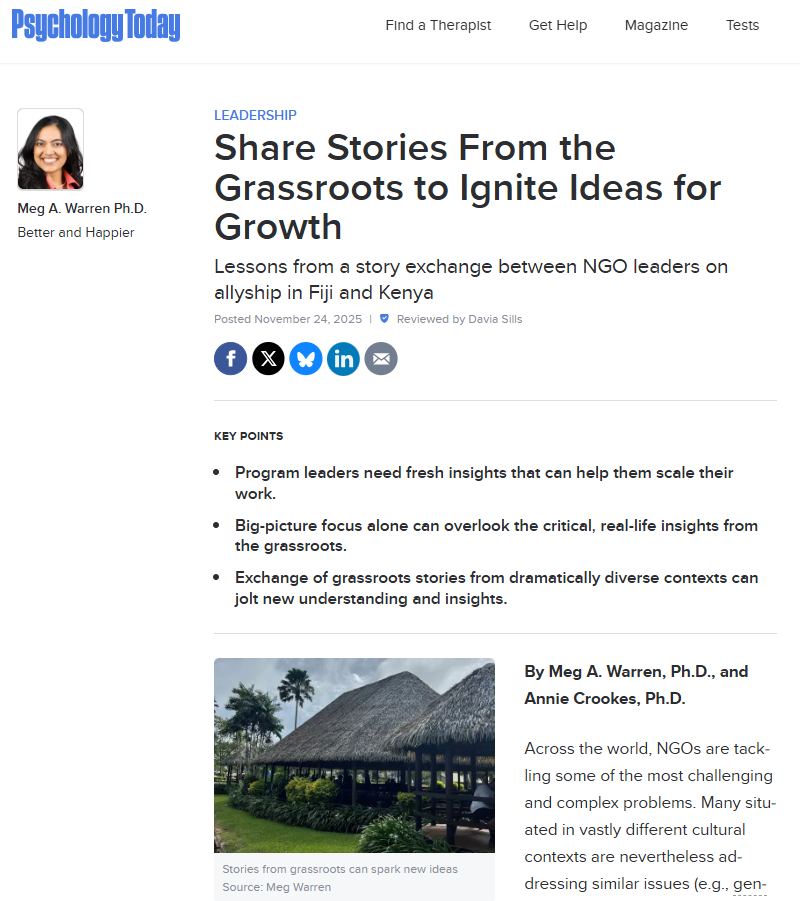Across the world, NGOs are tackling some of the most challenging and complex problems. Many situated in vastly different cultural contexts are nevertheless addressing similar issues (e.g., gender inequity, poverty, climate crisis), facing similar barriers (e.g., inadequate infrastructure, resistance), and struggling under similar resource constraints. Yet they feel isolated. They want to scale up, reignite creativity, and find connection and support. Yet, despite similar missions and goals, collaboration can feel hard. What if the solution isn’t another conference or toolkit, but a different kind of conversation?
This is the question we found ourselves asking recently. As a cultural psychologist who studies allyship, particularly men as allies for gender equity, I (Warren) try to immerse myself in various cultural environments to learn what allyship looks like within their contexts. During one exploration, Crookes (my co-author of this article) and I (Warren) interviewed Nisha Khan, the CEO of Building Innate Resilience Through Hearts in Fiji.
I found myself sharing stories from the grassroots from my recent visit to the NGO CfK Africa in Kenya, just as much as I was gathering stories about Fiji from Khan. What was supposed to be a one-hour interview extended to three. Instead of the formal interview I envisioned in her office, we ended up with a lively gathering, as staff members pulled up chairs and offered us tea and cakes.
At one point, Crookes suggested, “What if we—Khan, Crookes, and I—connected with Siama Yusuf, the senior program officer at CfK Africa in Kenya, and exchanged stories directly with each other?”
Sharing Grassroots Stories to Ignite Creativity
Research shows that sharing stories and experiences enables people to construct meaning together, enhance existing skills and knowledge, and strengthen social connections. Studies also find that sharing stories can spark creative insight and innovation. Particularly, stories from the grassroots that are rich, detailed, and fine-grained.
While Khan and Yusuf were keen to meet (virtually) and talk, we knew that they were two very different people working in vastly different contexts, and so we needed a strong setup. We also presumed that past online experiences would influence this new interaction, and all of us could default to “presenting” and “promoting” rather than deep sharing, listening, and reflection.
Read the full article on Psychology Today.

